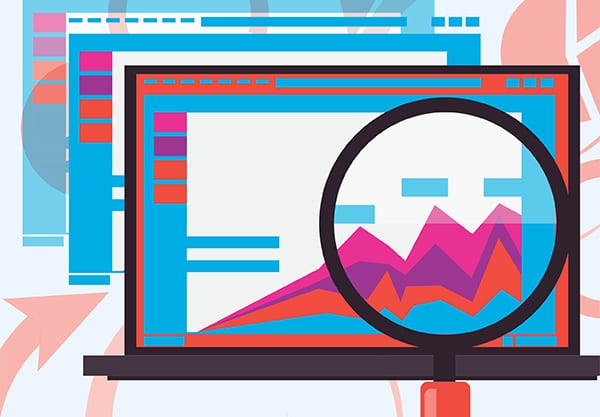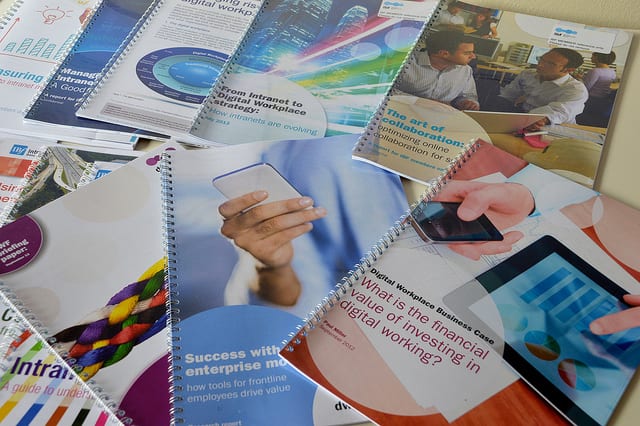New DWG research: Evidence-based Intranet Success

What does it really take to achieve intranet success? There are many views on this subject – but new research from DWG cuts through the opinion to reveal what it really takes to make a great intranet. DWG research author and benchmarker, Chris Tubb:
“Making a great intranet is no simple matter, often requiring a large number of people from across the organization to perform multiple management practices and processes really well – for perhaps three or four years. Getting those practices even nearly right is a major challenge for most organizations.”
Our analysis of 10+ years of DWG intranet benchmarking data provides a fresh look at the system of intranet management and reveals the key practices that teams need to focus on.
Chris again: “This body of data is unique. Because of the depth and candour of the research, as well as the benchmarking methodology, there is nothing that comes close to this insight in the intranet world.”
Download the executive summary of “Evidence-based Intranet Success: Best practices revealed by benchmarking data analysis’” now to read the introduction and get an overview of what the new report covers.
10+ years of benchmarking data
It’s no secret that DWG’s intranet benchmarking is world-leading – and has been for over 10 years – with more than 600 evaluations completed in that time. This report goes under the bonnet to examine the “what” and the “how” of our methodology: the specific areas we investigate, detailed criteria reviewed, and methods of data collection and analysis.
“The DWG intranet benchmarking process is based on models – each of these represents a model of best practice that, if carried out, we believe would lead to optimal business and user outcomes.”

Find out about how DWG members use benchmarking to improve performance.
How intranet management works as a system
Intranets don’t operate in a vacuum. When looking at the system of intranet management, it is essential also to consider other factors that can influence it, including organizational, people, external and lifecycle factors.
With this in mind, we look at the component parts of managing an intranet across the areas of strategy, governance, business value, intranet performance, communication, collaboration and usability. However, all aspects of these parts are not equal. In our analysis we distinguish “donor” and “recipient” aspects of management practice; in other words, the dependencies between the various areas.
Exploring the evidence
We have already explained that this report is not an opinion piece. If correlation coefficients and pairs plots are your thing, we’ve included some detailed analysis of our benchmarking data. If, however, these aren’t your cup of tea, skipping straight to the section on the practical implications of these statistics will work fine as well.
Before you do though, a few highlights:
- It starts with strategy. Getting strategy right is critical for intranet success. Yet the disproportionately high number of recommendations our benchmarkers continually make in this area demonstrate that organizations still struggle with developing and aligning strategy.
- Organizational change and culture stands out as being critical to performance in 10+ other areas of intranet practice.
- All areas of intranet management show positive correlation. Some of the strongest correlations are from intranet governance to intranet performance, business value and communication.
In brief, the thorough methodological basis of DWG benchmarking has been well and truly validated by this analysis.
How to improve in 30 key areas of intranet practice
In the final section of the report we look at what these findings mean for intranet managers seeking to improve performance in 30 specific areas of practice. For example, to develop and appropriately align the intranet strategy, it is important also to look at: practices for communicating strategy; identifying and engaging a senior sponsor; the underpinning governance model.
In this section we distil the learnings from the research and, if you’re really pushed for time, this is the part to read for direct guidance on how to manage your intranet more effectively.
Chris Tubb: “Ultimately, the intranet manager is a resource that is inevitably spread too thinly considering the many demands we detail here. We must consider how best to use precious resources to ensure that the ultimate outcomes – the success of the user and, in turn, benefit to the organization – can come about.”
The report includes an “At a glance” guide to help time-pressed intranet managers navigate straight to the answers they need in order to improve their practice.
How do I get my hands on this (and 60+ other) DWG reports?
DWG Members have exclusive access to our extensive research library, including reports on key topics such as collaboration, strategy and governance, future trends and much more. Members tell us that they regularly use this research as an aid to decision making, as a source of ideas and as the basis for rich interactions and knowledge sharing.
To get a taste of this invaluable resource, you can download the executive summary of this report or of any of our other reports, from the Resources area. To obtain the full reports though, you will need to join DWG’s member community.

(OK, as DWG’s Director of Research, I may be a bit biased, but in my view the business case for membership is covered by the research library alone. It’s the 2000+ pages of practical guidance, including 120+ case studies, I’d want at my side when managing an intranet – at any rate.)
Don’t just take my word for it though, here’s what DWG members say:
“It’s great to see intranet best practices from real life examples. Also, DWG provides a lot of explanations to help support their recommendations. I’m constantly searching for tips and guidelines on the internet for ‘intranet best practices’, but what I find is that there’s no data to support those recommendations.” Tiffani Crawle, Digital Reporting & Analytics Consultant at The Coca-Cola Company.
“Our default position is always to check the research library first and if there’s something relevant to what we’re doing there, we start with that.” Matthew Beckett, Digital Specialist, Intranet at Schroders.
To join organizations like Adobe, BT, The Coca-Cola Company, IKEA, Johnson & Johnson, UK Parliament and Verizon, who are already benefiting from DWG research, contact Nancy Goebel, Managing Director, Member Services to learn more.
Categorised in: Research reports
